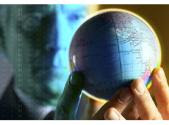
It’s like the celebrated tail of the beloved Dutch figure Hans Brinker --- the little boy who saved his town by putting his finger in the dyke. According to legend, as the fair-haired child was returning home from gathering wildflowers, he spied a leek in local levy. Seeing no one to help, he thrust his chubby finger into the breach. Wooden clogs and all, he remained at his post through the chill of night until through an act of providence; a local clergyman heard the child’s moans and brought the town engineer to plug the hole.
Unlike this charming Dutch story, the mere selfless heroism of a single champion will not be enough to hold back the torrent of bad news for the U.S. economy and specifically, the U.S. Dollar. While the President and his minions have promoted their promised rebate as the proverbial "finger in the dam," to most observers, it's easier to see the finger than the hole it's supposed to plug.
 Battered by new fears of a recession, the U.S. Dollar is falling at a record pace. On Thursday, the Dollar sank to record lows against Euro, marking a multi-year slide in which the European currency has gained more than 40% against the beleaguered greenback. At the core of this turmoil is not just the deepening subprime housing crisis, but a continued surge in commodity prices, and in particular crude oil. With oil prices holding above the $100 a barrel benchmark, consumer confidence has plummeted.
Battered by new fears of a recession, the U.S. Dollar is falling at a record pace. On Thursday, the Dollar sank to record lows against Euro, marking a multi-year slide in which the European currency has gained more than 40% against the beleaguered greenback. At the core of this turmoil is not just the deepening subprime housing crisis, but a continued surge in commodity prices, and in particular crude oil. With oil prices holding above the $100 a barrel benchmark, consumer confidence has plummeted.
Despite its stratospheric prices, oil has been a laggard compared to several other commodities. To date, natural gas prices are up 26%, coal has risen 56%, platinum has gained 41%, wheat has soared 41% and even an “exotic” commodity such as cocoa has swelled 38% in price.
 Although the world may not be able to abandon the dollar as the “global” currency, the trade opportunities associated with selling dollars against other denominations are vast. While the Euro and Canadian will likely continue to rise against the Dollar, other currencies such as the Japanese Yen, Aussie and Kiwi (New Zealand Dollar) will likely see similar gains. In particular, I think that “commodity-based” currencies like the Aussie and Kiwi will see the most action over the next several months.
Although the world may not be able to abandon the dollar as the “global” currency, the trade opportunities associated with selling dollars against other denominations are vast. While the Euro and Canadian will likely continue to rise against the Dollar, other currencies such as the Japanese Yen, Aussie and Kiwi (New Zealand Dollar) will likely see similar gains. In particular, I think that “commodity-based” currencies like the Aussie and Kiwi will see the most action over the next several months.
Australia, for example, has what the world wants --- I’m not referring to leggy blondes in bikinis --- coal, uranium, gold, silver, copper and other strategic metals. In July, the Aussie broke above $.85, and it hasn’t looked back since! Key currency analysts from ABN Ambro to the Royal Bank of Scotland are projecting the Aussie to hit parity with the U.S. Dollar by mid-spring, if not before. In the FX or foreign exchange market, traders can reap up to a $1000 for every penny rise in the Aussie’s value against the U.S. Dollar for every position they hold. With the Aussie currently trading at approximately $.94, this trade is attracting very significant attention, and it should attract yours.
Throw another shrimp on the barbie mate!
To learn more about my market recommendations, visit my website at:www.globewestfinancial.com.



















